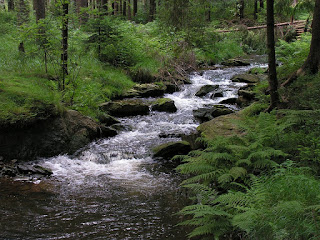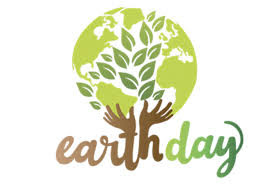Ecosystem | Definition, Structure, Types, component, Food chain
Ecosystem | Definition, Structure, Types, component, Food chain
In general terms or in day to day language we can say, that an
ecosystem is a community of living and non living things of the nature
interacting with each other in a given area.
The non-living things include weather, earth, sun, soil,
climate, atmosphere, etc.
In an ecosystem different organisms lives in close proximity
to each other.
For instance, in an ecosystem smaller insects feed
on green plants, and bigger animals feed on smaller ones and
so on. This feeding relationship is important in order to maintain the balance
of the ecosystem.
Food chain is a series of plants and organisms in which each
organism feeds on the one below it in the series.
We know that Sun is the primary source of energy. Plants
being the primary consumers directly
takes energy from the sun with the help of photosynthesis. The primary consumer
is then eaten by a secondary consumer. And the secondary consumer may be eaten
by a tertiary consumer, and so on.
Structure of Ecosystem:
At a basic functional level, ecosystem generally contains
primary producers i.e. plants , capable of harvesting energy from the sun
through the process of photosynthesis. This energy then flows through the food
chain to the consumers.
Consumers could be primary consumers (herbivores)
or secondary consumers (carnivores).
At the bottom of the food chain are the decomposers.
Scavengers and decomposers not only feed on dead tissues and waste products but
also breaks organic compounds back into its organic constituents. It is the
microbes that finish the job of decomposition and produces organic constituents
that can again be used by the producers.
Types of Ecosystem:
There are several types of ecosystem in our planet. However
here we will discuss about the three major types of ecosystem.
1. Freshwater Ecosystem
2. Terrestrial Ecosystem
3. Ocean Ecosystem
Freshwater Ecosystem –
In freshwater ecosystem we find ponds
and rivers. Ponds are relatively small and includes various types of plants,
amphibians and insects. Sometimes they include fish.
Rivers always link to the sea,
they mostly contain fish with the usual plants, amphibians and insects. These
sorts of ecosystems can also include birds because birds often hunt in and
around water for small fish or insects.
Terrestrial Ecosystem -
A terrestrial ecosystem is
a type of ecosystem found only on biomes also known as beds. Six
primary terrestrial ecosystems exist: tundra, taiga, temperate deciduous forest, tropical rain, forest,
grassland and desert.
However, a
few facts about the terrestrial ecosystem are true almost all of the time. For
instance, most contain herbivores that eat plants and all have carnivores that
eat herbivores and other carnivores.
Some places, such the poles, contain
mainly carnivores because not plant life grows. A lot of animals and plants
that grow and live in terrestrial ecosystems also interact with freshwater and
sometimes even ocean ecosystems.
Ocean Ecosystem -
While the ocean is divided into zones and
layers, these are broad categories that do not specify the diversity of
ecosystems present. Each layer or zone includes several ecosystems, which have
adapted to specific habitats found in those oceanic regions. Marine life can be
found from lush shorelines to deep, oceanic trenches. Some of the Ocean
Ecosystem are Shoreline ecosystem, Coral reefs, Mangroves, Open ocean and Deep
ocean.
That's all for now.
Do Subscribe to get notification for the future posts.......








Comments
Post a Comment